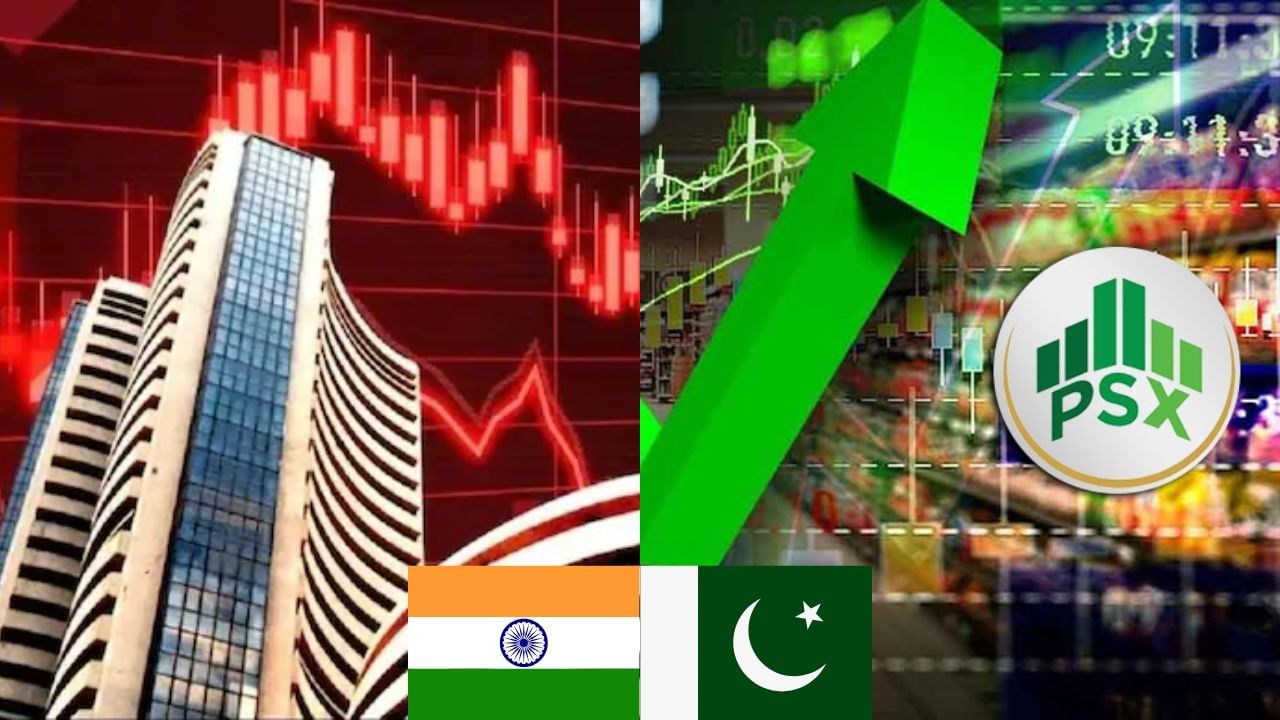Pakistan Stock Exchange (PSX) has created history by taking the KSE-100 index beyond the magic number of 100,000 points. Pakistan has achieved this achievement before India. Right now the Indian market has not even crossed the 90 thousand mark. On Thursday morning, the index registered a rise of 947.32 points (0.95%) and reached 100,216.57 from the previous closing level of 99,269.25. At the end of the day the index closed at 100,082.77 with a gain of 813.52 points (0.82%). This historic gain has come after two days of political uncertainty in the country, which had destabilized the market for some time.
Condition of Indian market bad?
On the other hand, if we talk about India, yesterday there was a huge fall in both Sensex and Nifty. Sensex closed at 79,043 with a weakness of 1,190 points and Nifty fell by 360 points at 23,914. The reason behind the decline in India was the selling of Indian IT stocks due to the imposition of tariffs on China by America. Because investors became afraid that America might take action against Indian IT companies too. However, one thing to be noted here is that most of the business of Indian IT companies is with countries outside India. Now the question being raised here is that why has Pakistan’s stock market rocketed amidst the selling in the Indian market?
Why did Pakistan market rise?
Mohammad Sohail, Chief Executive of Topline Securities, while talking to Pakistani newspaper Dawn, said that the Pakistani market has given returns of Rs 40,000 to Rs 100,000 in just 17 months. He said that this boom is the result of loan from IMF (International Monetary Fund) and fiscal discipline, which has re-established investor confidence. Apart from this, the sharp fall in inflation and interest rates has increased the cash flow in the market.
This is how the market picture has changed in the last 25 years.
Sohail said that even though the market is at historic highs, its PE ratio is still trading at 5x, which is lower than the average level of 7x. This has provided attractive opportunities to investors in the market. Sohail said that in the late 1990s the index was less than 1,000 points, but now it has increased 100 times to 100,000. He described it as the result of 25 years of ups and downs, boom and recession, optimism and pessimism. He said that the market has made an average of 20% annual return (in rupees) and 13% return (in dollars) in these years. This shows the flexibility and potential of the market.
Faran Rizvi, head of equity sales at JS Global, described the achievement as a historic moment. He said in a media interaction that this index reaching 1,00,000 is in line with his year-end target. Rizvi said his target of Rs 100,000 with 60% returns was based on a combination of 47% capital gains and 13% dividends.
